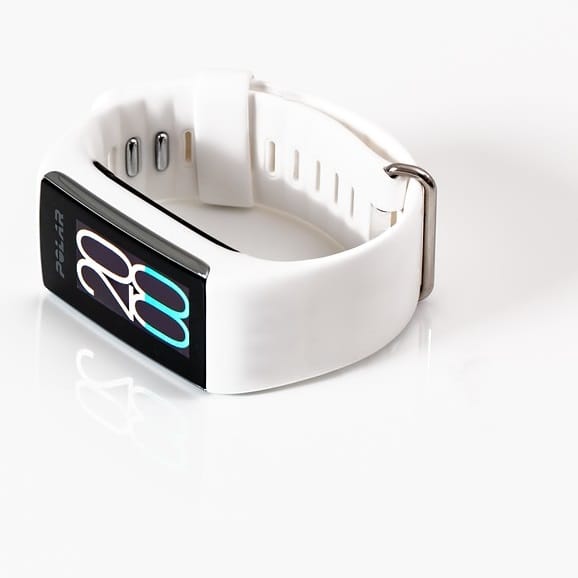IoT & Wearables: Fitness tracking

The fitness industry is undoubtedly one of the strongest markets to have emerged from the IoT and wearables explosion. From smart watches to dedicated bands, both wearables and IoT equipment vendors and manufacturers have largely focused on providing fitness enthusiasts with new tools.
The era of fitness tracking
Though obesity-related health issues are a major problem in many Western countries, there has been a resurgence of interest in fitness in the last few years. The younger generations are particularly interested in healthy lifestyles and exercise is obviously a considerable part of those.
While smartwatches often come equipped with fitness tracking abilities, there are far more dedicated fitness trackers. Usually, these come in the form of wristbands which can be used for a variety of activities including running, cycling, and Fswimming.
Many wristbands are either dedicated to specific activities or feature at least one unique feature, such as helping the user maintain proper posture in the gym. Often, it seems like OEMs attempt to fit in as many sensors as possible in their fitness trackers while maintaining their small form factor.
Sleep tracking is another area which has attracted significant interest from fitness enthusiasts. Wristbands for fitness tracking, combined with dedicated applications, allow users to track and effectively manage their sleep.
The numerous uses of fitness-related trackers are well-established. However, we must also not forget that these are nothing more than devices. A device that counts your steps, calories burned, or heart rate is useless on its own.
In general, OEMs should be careful when marketing such products. Claiming that they increase activity levels is dubious, though it can certainly be true for certain people. For others, activity trackers are simply a way of supplementing existing workouts or incorporating tech into their activities.
One size does not fit all
Though wristbands have proved to be the most popular in the market of fitness tracking, they are not the only type of trackers available. The Sensoria Fitness socks, for instance, are supposed to track things like heart rate and force to help users with their running form.
Other devices are simply supposed to be carried in a pocket or a backpack. Devices like the Jawbone Up Move allow for a more discreet approach to fitness tracking. However, they are usually less accurate than their worn counterparts and often cost the same.
Another example that is a bit more out there is the HAPIfork. The Bluetooth fork promises to make users healthier by prompting them to eat slower. The premise here is that eating slower allows your body to realize that you are actually full so you can eat smaller portions while retaining a healthy lifestyle.
As one might expect, such wearables have not managed to attract a wide audience. A common problem is that they are too pricey, particularly as one-of-a-kind experiments. Without having something to compare them with, dropping $150 on Bluetooth socks is not an easy sell.
One area which shows promise is the marriage of different technologies. For example, combining fitness-tracking features with standard earbuds can work surprisingly well. Heart-rate sensors in particular have proven to work extremely well, even though reaching their golden point was challenging.
Other devices are a bit more questionable though they have certainly found their own markets. Wi-Fi scales are a prime example of this area. Such products aim to measure full body compositions but whether users can actually take full advantage of them or not is up for debate.
Possibilities for IoT
The applications for IoT devices does not stop at the wearable level. The simplest example of all probably comes from potential applications in future gyms. For instance, imagine a treadmill with gamification features, allowing you to compete in real-time with gym goers from all around the world.
The beauty of many IoT devices is that when they work as intended, they provide a seamless experience. Receiving advice from a virtual trainer on customizable workouts that you can share with your friends might be a very simple experience in the future, for example.
As we briefly saw in a previous entry of this content series on Smart Clothing, placing tiny sensors on regular gym clothes may also be a reality soon. A branded line of gym clothing with ties to specific facilities may also be viable.
The gym of the future will not only be convenient for consumers but also for owners and managers. Taking care of maintenance, gathering data, and even controlling certain types of equipment remotely can all be made possible through IoT.
Conclusion
The fitness segment of the wearables market will most likely to continue to expand. With interest in fitness and health increasing year-by-year, it is likely that manufacturers will come up with even more ways of providing fitness-related devices to a hungry market.
My hope is that alternative wearables will rise in popularity as manufacturing costs decrease. While wristbands can be fantastic, wearables should not be limited in imagination. Seemingly strange devices should surely come out on the surface over the coming years. Then, perhaps, wearing a pair of smart socks will be nothing out of the ordinary.



